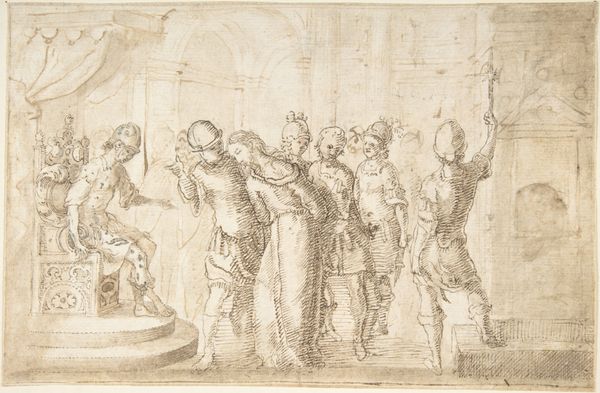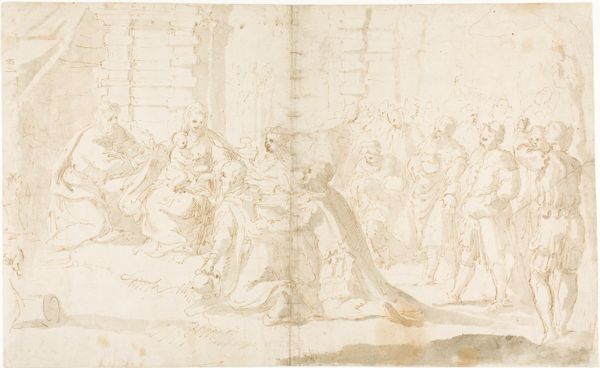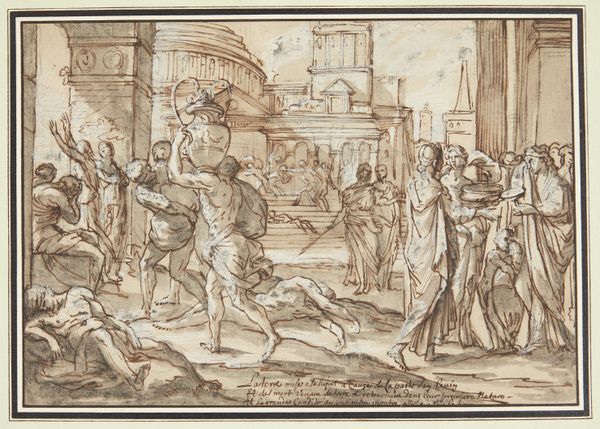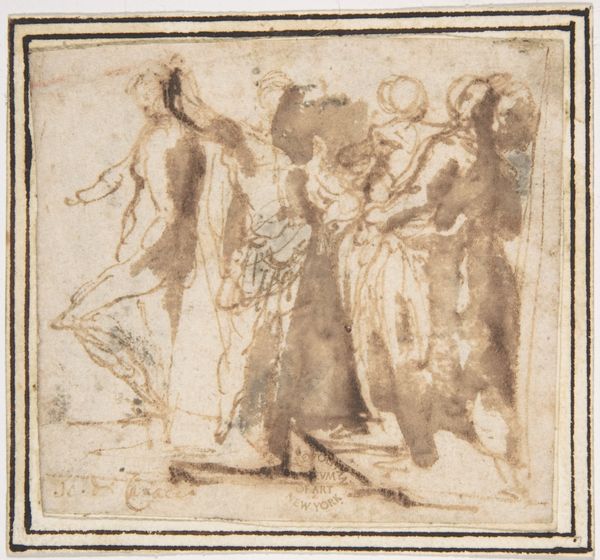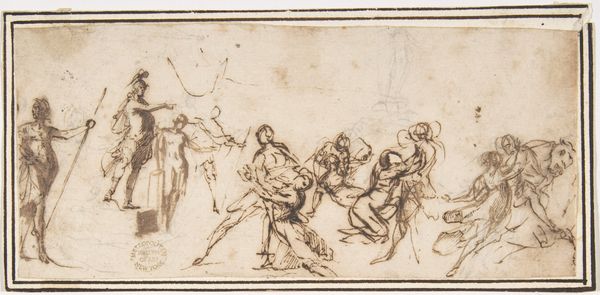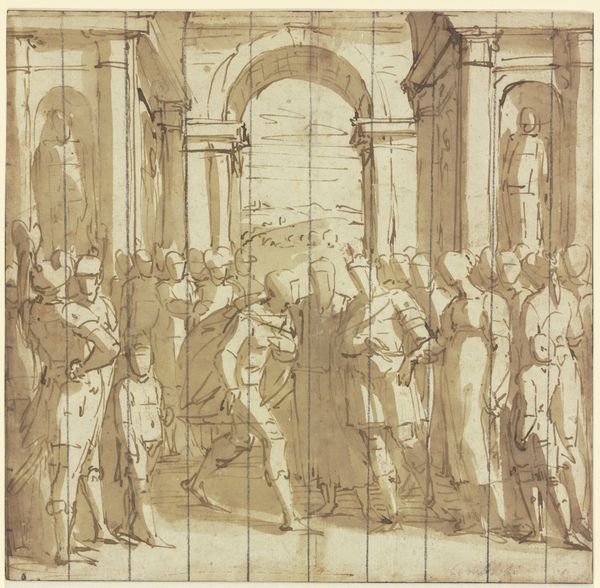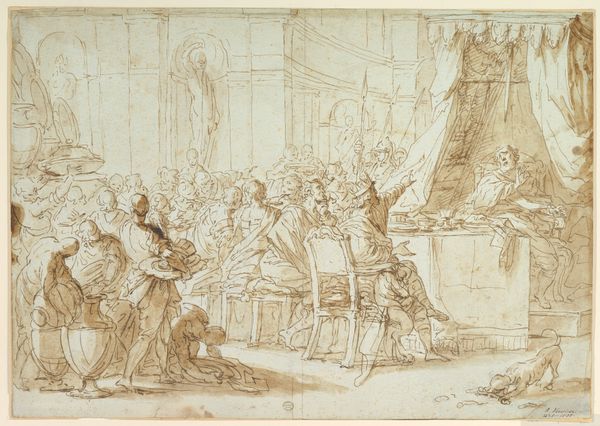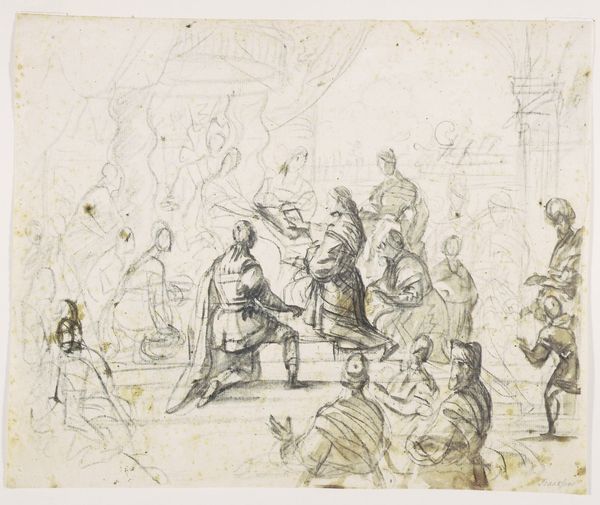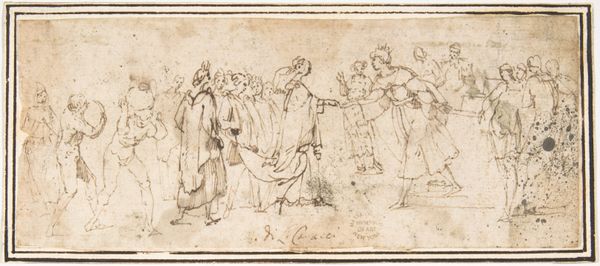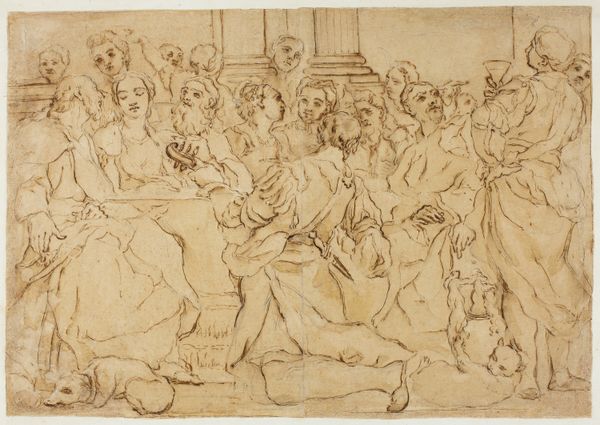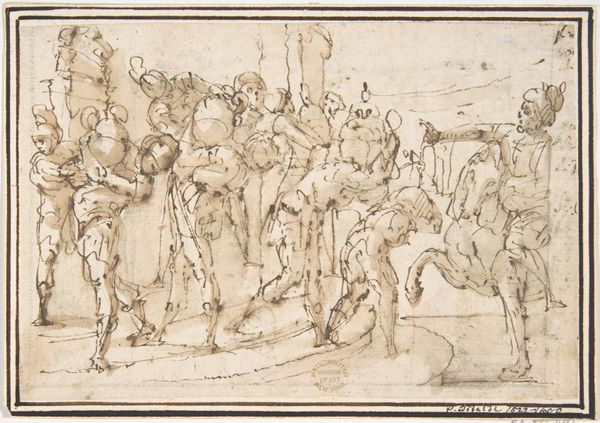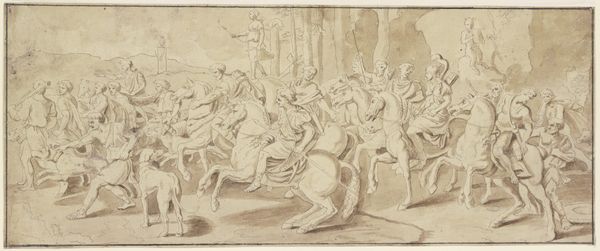
Aeneas and Achates Entering Dido's Palace in a Cloud 1624 - 1663
0:00
0:00
drawing, print, paper, ink
#
drawing
#
allegory
#
narrative-art
#
ink painting
# print
#
figuration
#
paper
#
11_renaissance
#
ink
#
history-painting
#
italian-renaissance
Dimensions: 3-1/2 x 5-1/16 in. (8.9 x 12.9 cm)
Copyright: Public Domain
Editor: This ink drawing, "Aeneas and Achates Entering Dido's Palace in a Cloud," attributed to Francesco Allegrini, dating sometime between 1624 and 1663, depicts a scene teeming with figures. I'm immediately struck by its dreamlike quality, almost as if it’s a fleeting vision rather than a solid reality. What key symbolic elements or iconographic traditions do you notice within this artwork? Curator: The cloud, first. Clouds often serve as veils, hiding or revealing divine intervention. Here, it's a vehicle for Aeneas and Achates, but it's also obscuring something – perhaps truth, or destiny. Ask yourself, why use a cloud instead of simply showing them arrive? It infers hidden purpose, doesn’t it? The hazy lines amplify the uncertain mood, reminding us of human endeavors shrouded by forces unseen. Editor: So the cloud adds a layer of mystery to their arrival. And what about Dido herself? What symbols might be associated with her and her court? Curator: Look at her throne and the figures around her. These are emblems of power and civilization, yet are they secure? Consider her gaze, her posture. Are these indicators of welcome, of danger? These characters borrow from a well established visual language from classical times to display ideals about authority, legitimacy, and order, yet Allegrini imbues his scene with ambiguity by how he has rendered form in tonalities of ink, leaving a haunting impression upon the viewer. Editor: That’s fascinating, thinking about how the symbolism both reinforces and subtly undermines the obvious narrative. Curator: Exactly. Visual cues allow the artist to construct multiple layers of meaning and highlight historical memory for viewers. It invites you to look closely and recognize archetypes, which have resonated across eras. What we visually remember shapes our present and our perception of historical memory. Editor: That interplay between the explicit story and the underlying visual language gives a new layer of depth. It's like deciphering a hidden message embedded within the scene. Curator: Indeed! The layers invite contemplation not just about *what* happened, but about what continues to endure.
Comments
No comments
Be the first to comment and join the conversation on the ultimate creative platform.
